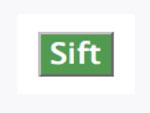Supporting Text Comprehension and Vocabulary Development Using WordSift
 ,
,  ,
,  ,
, 
WordSift is a free, web-based tool designed to help teachers manage the demands of vocabulary and academic language in their text materials. It can help students preview text and rapidly scan for relevant and challenging vocabulary. WordSift is easy to use, and especially useful for history teachers looking for an open-ended, holistic approach to vocabulary instruction when using assigned texts. While we believe that this tool can have a positive impact on text comprehension for all students, we designed WordSift with special attention to support literacy development for English Learners.
The best way to explore features is to just go to the site, enter any text into the main box, and click on SIFT. For example, you can go to Wikipedia and copy the entry on the J.F. Kennedy assassination, and paste it into the WordSift box and click SIFT. The resulting display will show a tag cloud of the 50 most frequent words in the text, in alphabetical order, sized according to their frequency in the text (Image 1). Already, you can see that this text is going to be about the Kennedy assassination and conclusions from an investigation.
Image 1

The user can dynamically sort and mark the cloud. In Image 2 (Below), the words have been sorted from the least common to the most common, and words from the social studies list are highlighted in orange. This quick analysis already shows that some of the less common words like "depository," "motorcade," and "autopsy" might be reviewed in advance of reading. You might also note that words like "president," "state," and "Texas" are commonly found in social studies.
Image 2

Whenever you click on a word in the cloud, the word is dynamically linked to Google Images® and the Visual Thesaurus®. These features are helpful in supporting visualization and vocabulary development through exploration of the network of related words. The Visual Thesaurus® display is itself interactive: the definition of each word on the display pops up when the cursor is scrolled over it, and a click on any word on the web reconfigures the display to bring that word to the center. The part of the screen below the cloud is shown here:
Image 3

The very bottom of the display also shows all the sentences in which any word clicked in the cloud appear. This is a very useful way of looking at the sentential contexts in which any word appears. Combine it with the Visual Thesaurus® and Google Images® for an innovative way of learning vocabulary. In addition, if you click on any sentence, this takes you to a new display in which the sentence can be seen in context of the entire text.
There are various advanced features. For example, the user can drag images and words to a workspace to create a mini-poster or a worksheet. Vocabulary lists can also be customized so that targeted words can be marked. These are all explained through links available on the webpage, including demonstration videos.
Research has shown that multimodal approaches to vocabulary instruction permit students to learn new vocabulary by integrating new words with old, increase students' encounters with a word, facilitate imaging, and promote independent learning strategies. We would be happy if you think of WordSift playfully—as a toy in a linguistic playground that is available to instantly capture and display the vocabulary structure of texts, and to help create an opportunity to talk about and explore the richness and wonders of language!
 ,
,